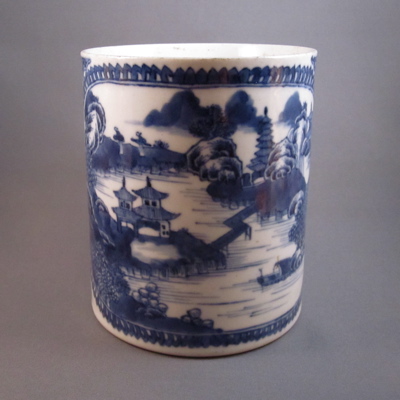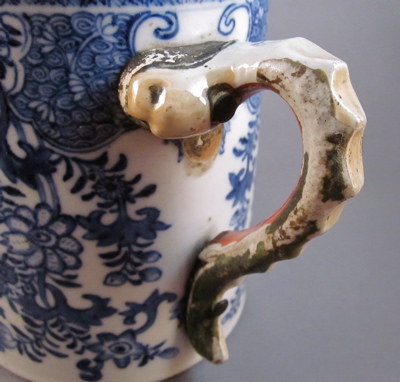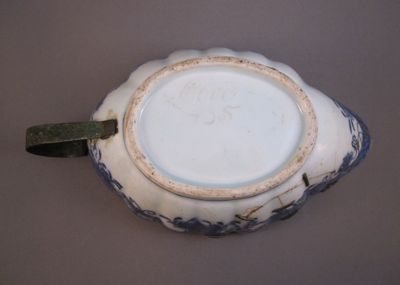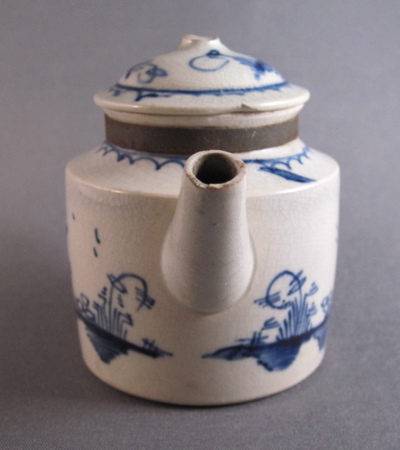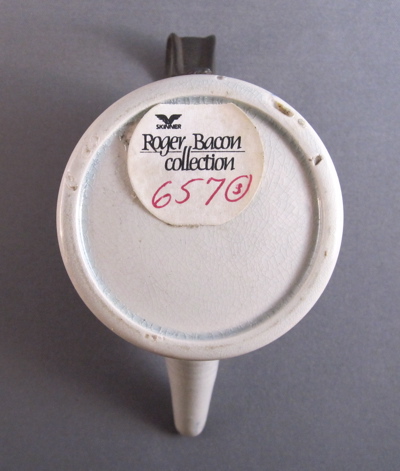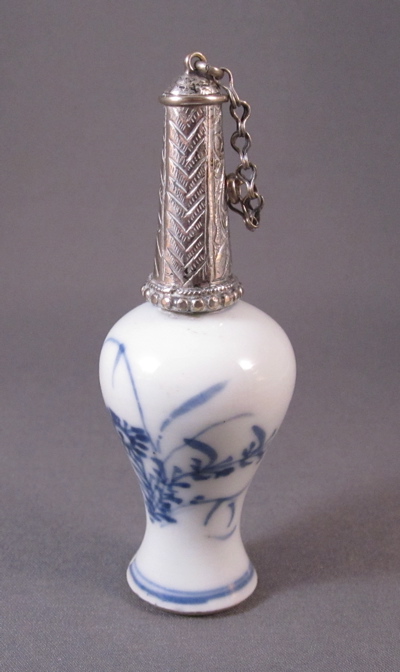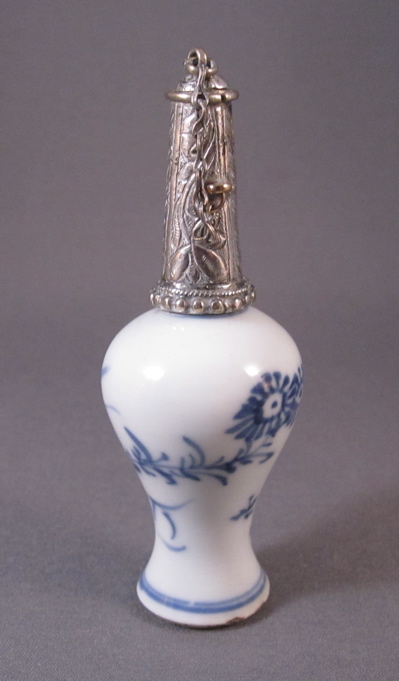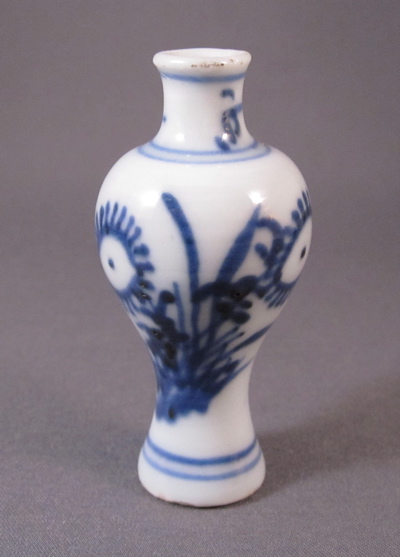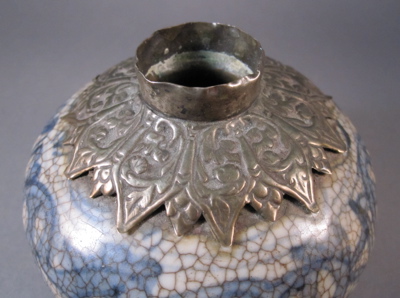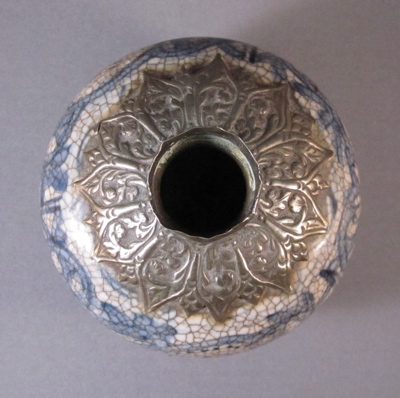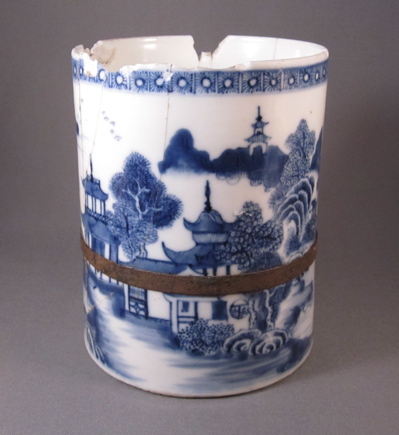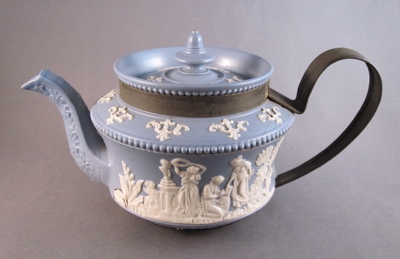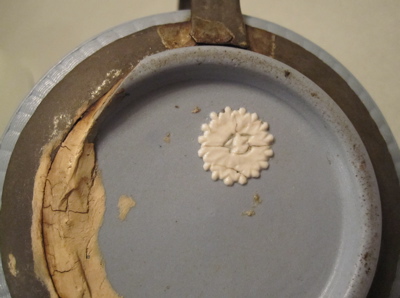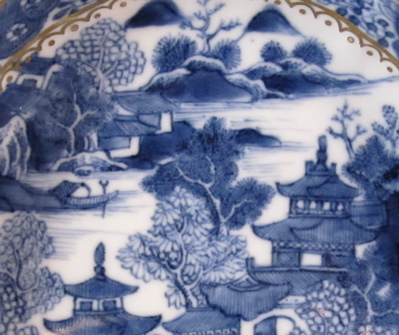This Chinese porcelain plate started out life in the early 1800s with traditional blue underglaze Canton decoration. It was later painted over or “clobbered” with overglaze washes of red, green enamels and gilt highlights, without much thought to the original plate’s decoration. As the demand for more colorful wares increased throughout Europe, enterprising merchants painted over their slow selling blue and white ceramics. Much of the over decorating was done in the Netherlands, where the pieces were referred to as “Amsterdams Bont” (colorful wares from Amsterdam) . Plate measures 8-3/4″ in diameter.
After the plate dropped and broke in to 4 pieces, it was made whole again by the addition of 9 metal staples.
A “Chinese” mark on the bottom is actually part of the Dutch clobbered decoration.
This Canton plate shows what mine looked like before it was embellished.
Photo courtesy of Antique Helper







